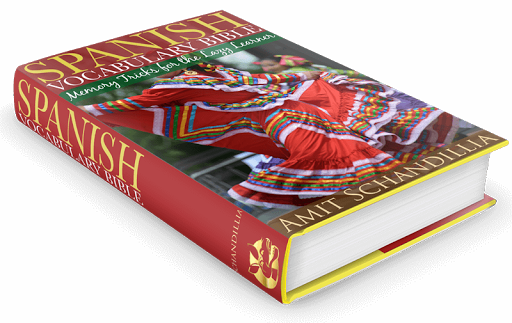Más vale pájaro en mano que ciento volando. (A bird in hand is worth a hundred flying.)
This is a widely recognized saying and perhaps exists in some form or the other in almost every major language spoken by humans. There might be some minor variations such as the one in English talking about “two birds in the bush” instead of the Spanish, “hundred birds flying,” but the essence remains the same. This universal recognition means you are far more likely to recall this sentence, almost as a catchphrase, than any other.
The nuts and bolts
 |
| Más vale pájaro en mano que ciento volando Photo credit: Steve Ryan licensed CC BY-SA 2.0 |
vale: This is the singular third-person simple present tense form of the Spanish verb, valer, that means “to value” or “to score” in English. As you can easily notice, most “-er” verbs shed their “-r” when used with singular subjects in third person for the simple present tense. For plural subjects in third person (in simple present), they replace their terminal “-r” with an “-n”; for example, valer becomes valen.
pájaro: The Spanish for bird, this is essentially the subject in this sentence.
en: This one is simple; “in” is English and en is Spanish. That’s all there is...should be pretty easy to remember!
mano: This is the Spanish word for “hand”. Actually, mano has it’s roots in Latin from where English has borrowed quite quite a lot of it’s vocabulary as well. Evidently, the English word, “manual” draws from the same root and unsurprisingly stands for something done by hand. In this sentence, the complete subject, hence, is “bird in hand”.
que: This word (without the accent mark over “e”) usually stands for the English “that”. However, in certain contexts it can also come to mean “than” (in the sense of comparison), particularly when the sentence or phrase containing que also contains más (more) or menos (less).
ciento: This is how you say, “hundred” in Spanish. Remember, however, that it is ciento only as long as it is being used as a noun. If it modifies another noun, i.e., is being used as an adjective, it drops the last syllable and reduces to just cien. So, while “hundred men” is cien hombres (cien is an adjective), “hundred and ten” is ciento diez (ciento is a noun).
volando: This is the progressive or continuous form of the Spanish verb, volar (to fly). In English, we form the progressive of a verb by appending “-ing” to the base (infinitive without “to”) form. Thus, “to fly” becomes “flying” and “to eat” becomes “eating”. In Spanish, we do this by replacing “-ar” by “-ando”, and “-er” and “-ir” by “-iendo”. Hence, bailar (to dance) becomes bailando (dancing) and vivir (to live) becomes viviendo (living) and, in this case, volar becomes volando (flying). That’s it!
String’em all together
Now, let’s put it all together. The sentence opens with más. Actually one of the ways this word is used to convey various quantity is by using it in conjunction with que. For example, in this context, the usage of más and que together indicates comparison (más...que stands for “more than” in a fashion similar to how menos...que stands for “less than”). So, más vale would just mean that something scores more or is valued more. Más vale pájaro en mano que ciento volando literally means, “A bird in hand scores more than a hundred flying,” in the following structure:
Más (with que, as a tool for comparison; here, más stands for “more”) - verb (here, singular third-person simple-present tense of “to be worth”) - subject (here, a singular “bird in hand”) - que (with más as described earlier as a tool for comparison; here, que stands for “than”) - adjective (here, a number, “hundred” quantifying the object) - object (here, “birds in flight” with “birds” being implied but not stated).
Please note that the sentence structure here shows a stark departure from the simpler S-V-O (subject-verb-object) order we are so used to. Yes, Spanish is much more flexible in it’s order than English is and the various pieces of a typical Spanish sentence can take any position depending on the context. Typically, adjectives come before the nouns they qualify (not always though) and the subject comes before the verb (with the subject being omitted and only implied if it happens to be a pronoun, e.g., I, you, we, etc.). However, often, the V-S-O order is preferred with the verb coming before the subject in contexts where the action needs a subtle stress. This is what has happened in this sentence.



.png)